Fourth Stop: En route to the Guggenheim!
#Destination Scotland
As I had been driving up through Spain it came to me that there is more to Bilbao than a Ferry Port! The industrial city in northern Spain bristles with skyscrapers tightly surrounded by green mountains. It is the de facto capital of the Basque Country famous for the Guggenheim Museum designed by Canadian American architect Frank Gehry, and every mile, now that Madrid was in my rear view mirror was taking me closer!
The Bilbao Guggenheim represents a magnificent example of the most groundbreaking 20th-century architecture. With a floor plan of 24,000 square meters, of which 9.000 are dedicated to exhibition space, the Museum represents an architectural landmark, a bold and innovative design, providing an exciting venue for modern art exhibitions. Altogether, Gehry’s design creates a spectacular sculptured structure which sits comfortably in Bilbao’s downtown harbour area.
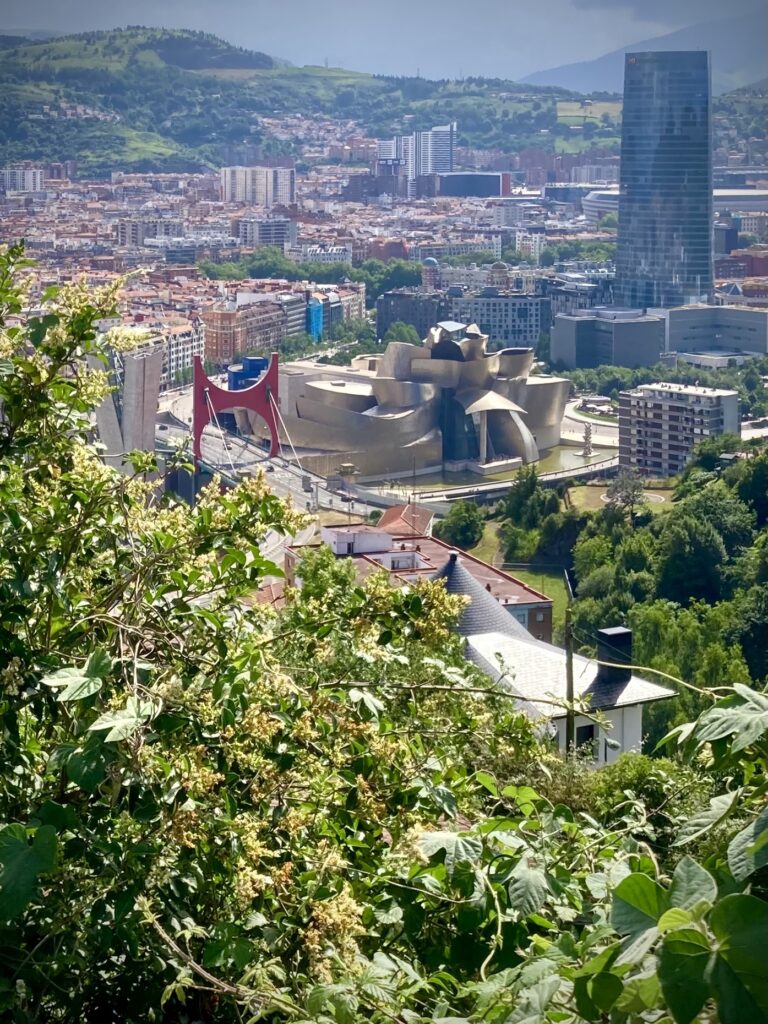
I found an underground car park beneath a very fancy office block in the town centre. The lift delivered me onto a pedestrianised area where indoors had been reinvented outdoors by comfy looking street furniture, a chess table, standard lamp and sofa-like seating with so many people sat on it I was too shy to photograph that.
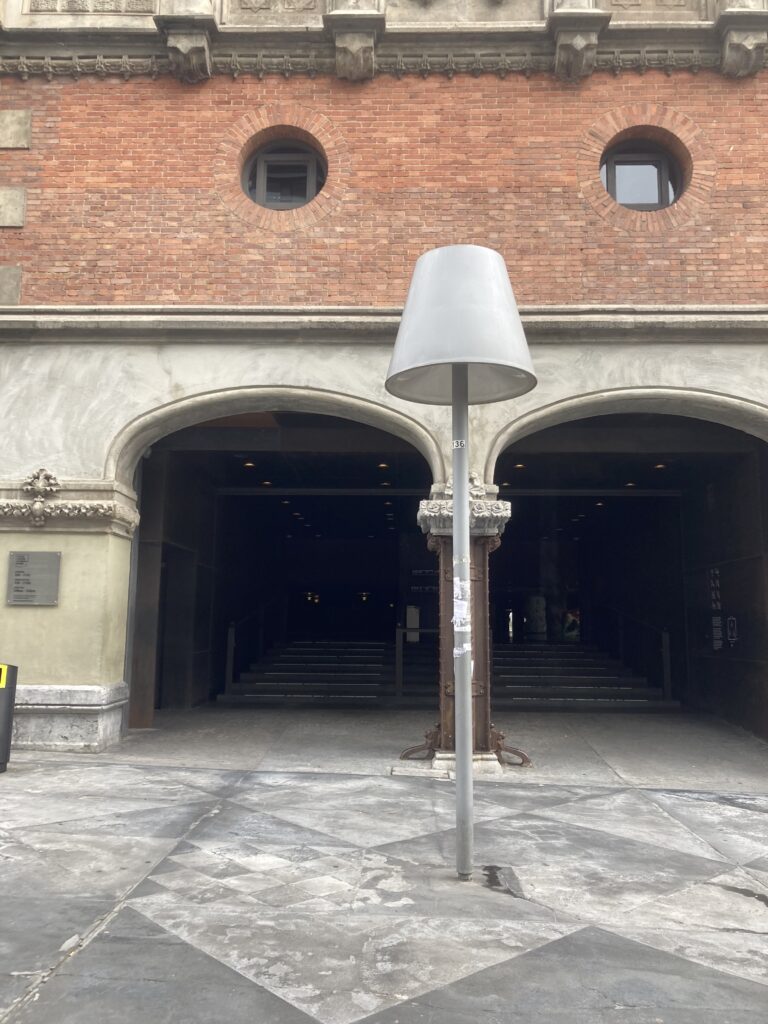
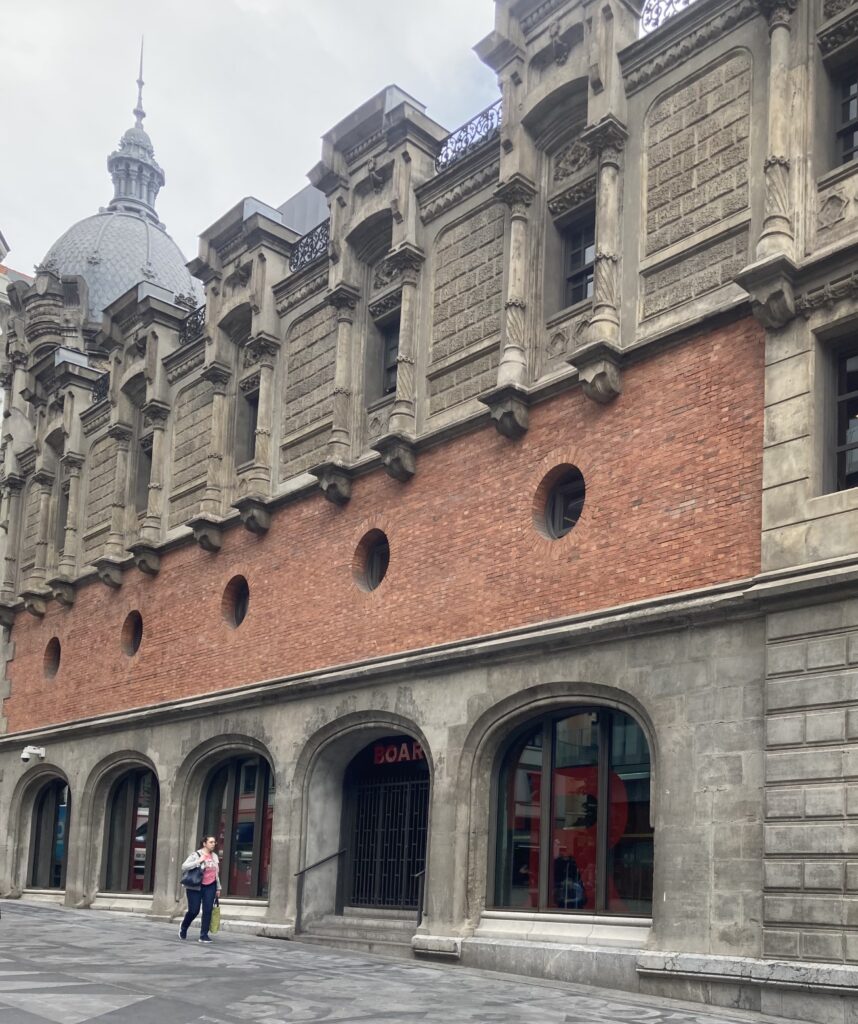
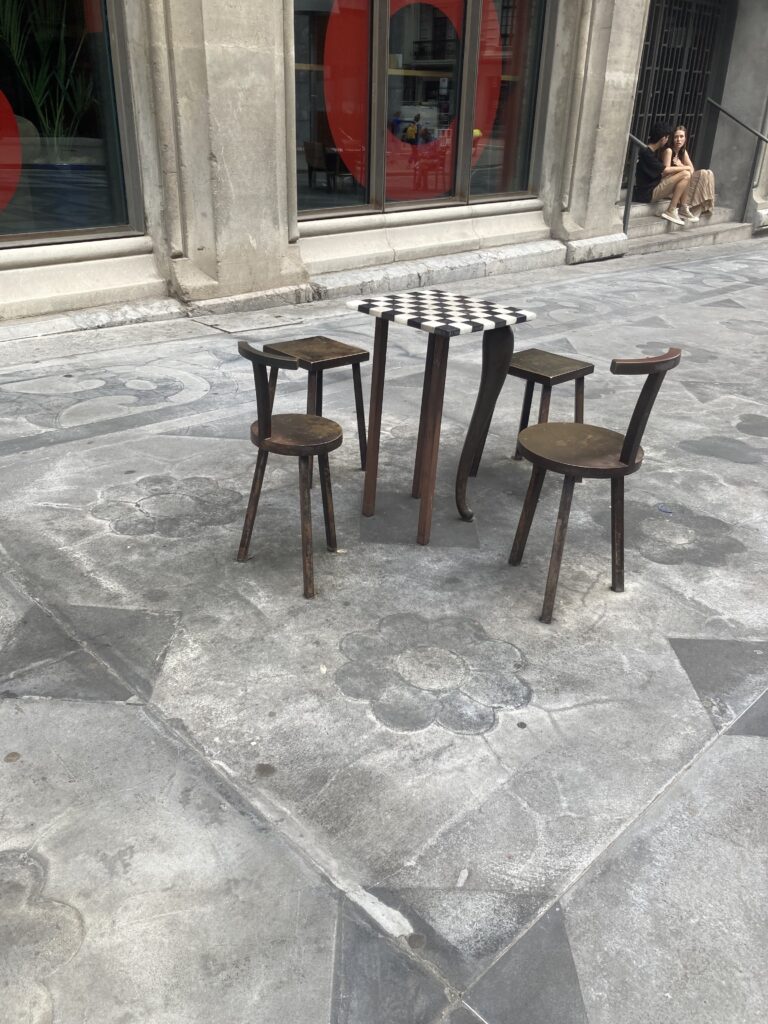
More fun and games on the approach to the Museum, a 43-foot high patchwork flower-covered West Highland terrier by Jeff Koons has been guarding the Guggenheim since 1992. Suddenly I was shrinking, having to take big strides to manage the broad limestone steps down to the entrance, or take two paces to each step, like a little child trying to negociate them. As I shrank, the ginormous outer walls of Museum building rose above me. The architect chose the titanium cladding after studying a range of samples pinned up outside his office in all weathers. Wow, and I hadn’t even stepped inside!
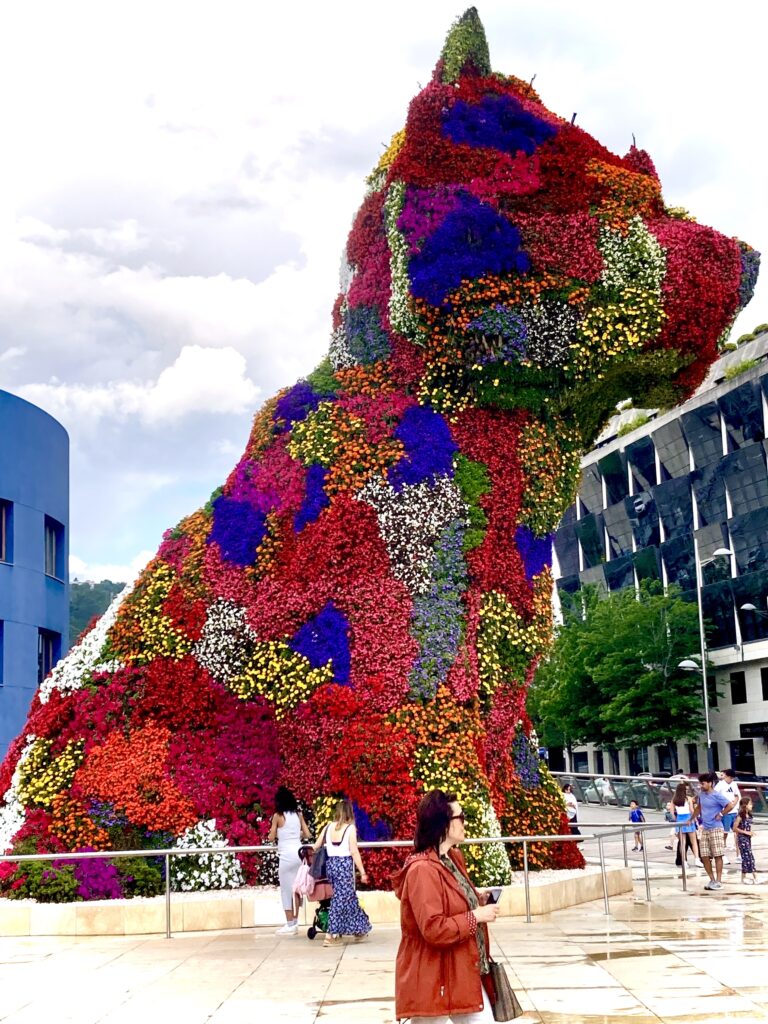

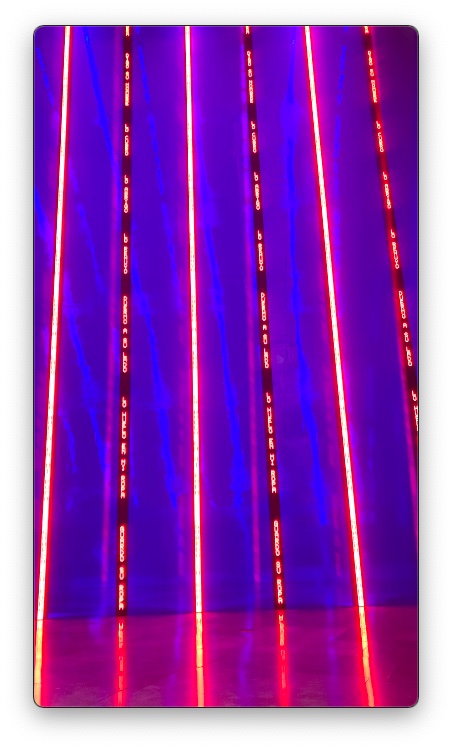
First I encountered Jenny Holzer’s piece at the Bilbao-Gugghenheim museum, it is several stories tall, built in horizontal strips that allow the viewer to walk right across the floor right in between the columns of the words which ascend in a continuous narrative, the same story cycling through several languages. I found a seat at the back of the auditorium and read what it said. A sad story in truncated statements – one woman’s experience of a relationship that ends with her partner gone and she alone. A stark contrast to the fun delivery and how much joy the light show sparks in the people who come in and walk around it, but few people seemed to stop and read the text through.
Is that not so often the case, we meet up, dress smartly, hide our feelings and does the other person really listen, really bother finding out the truth?
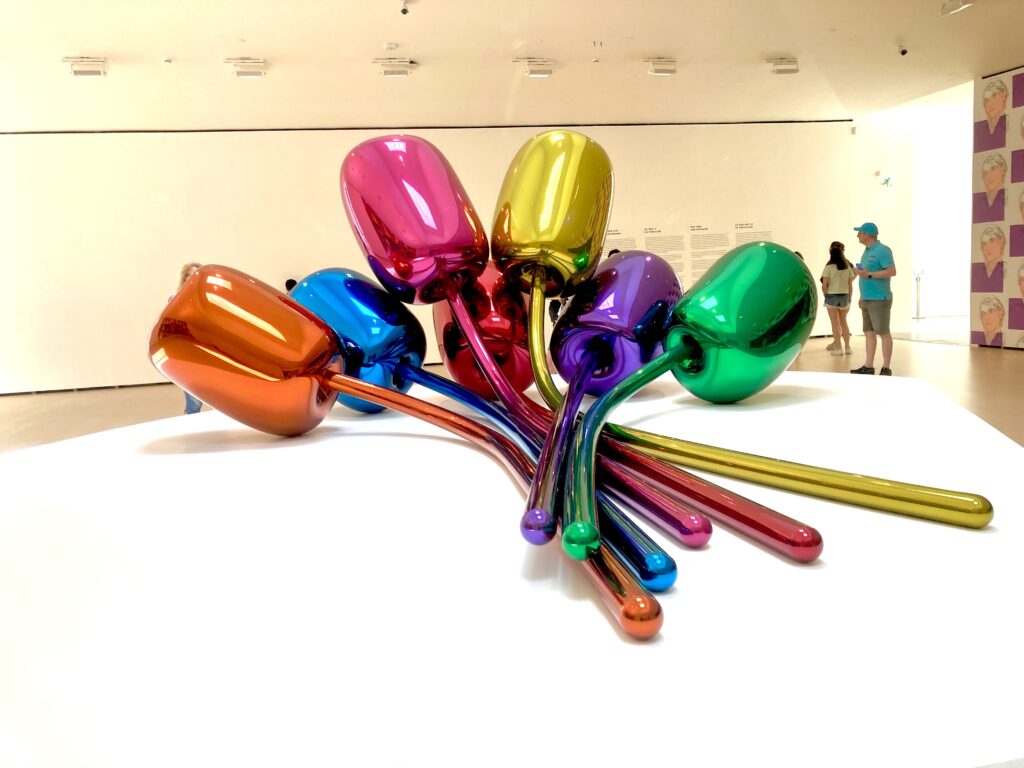
‘Tulips’ are more than 2 meters tall and 5 meters across where they lie on a white podium in one of the Goggenheim Galleries.
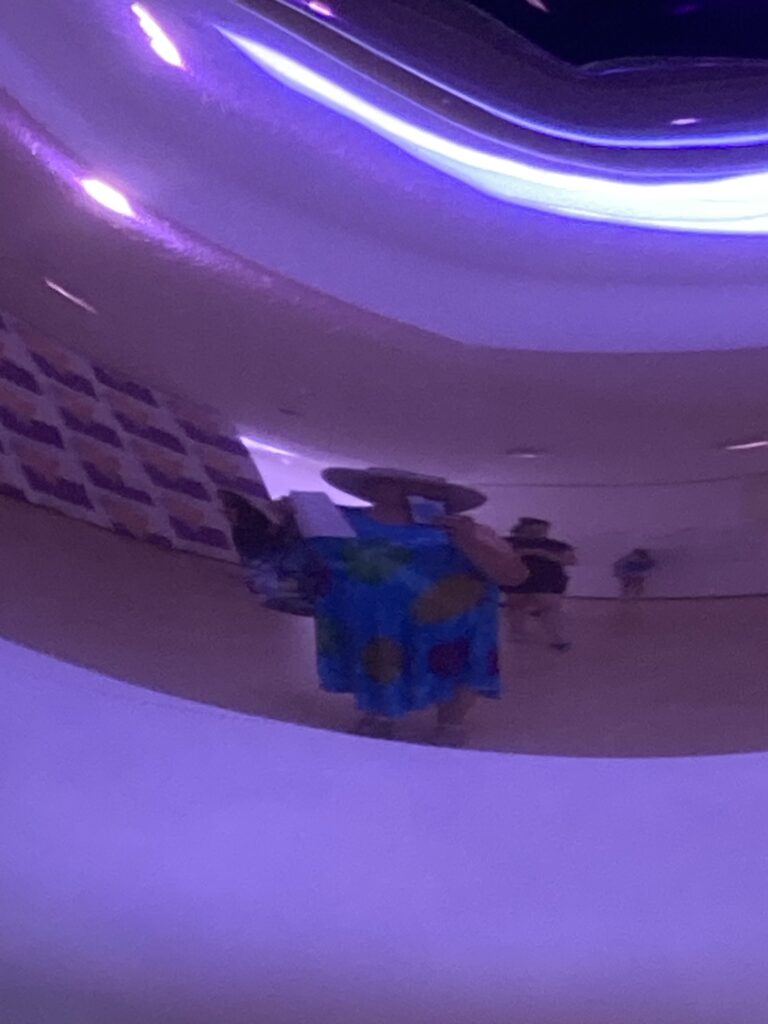
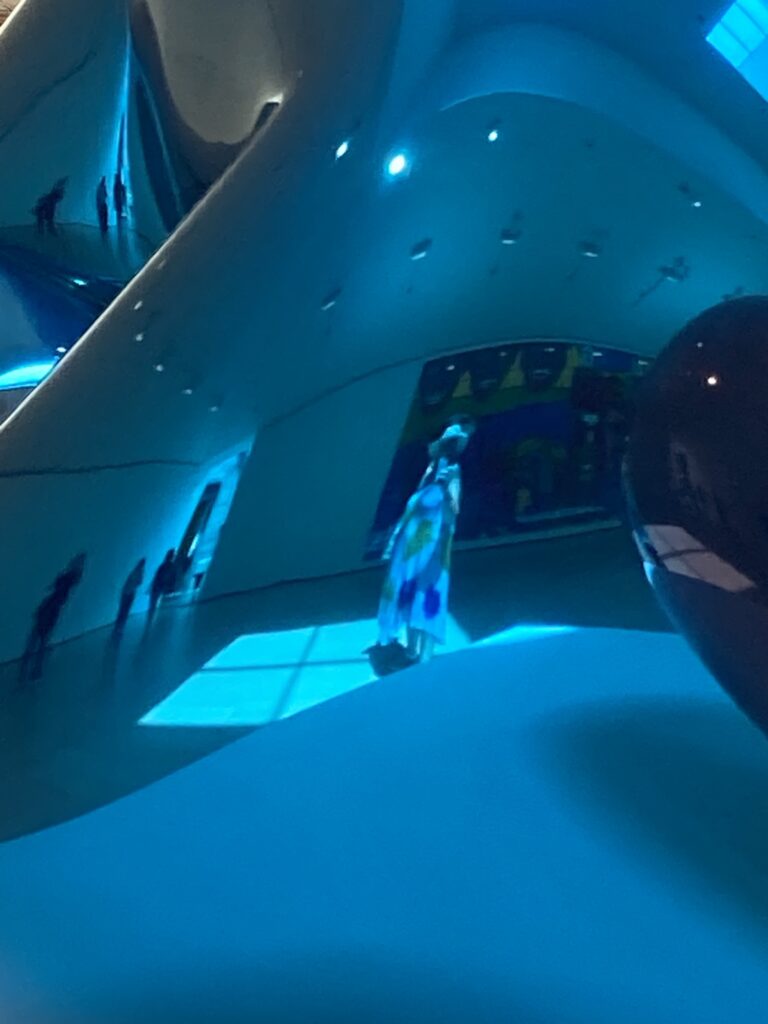
Pride of place in one of the Bilbao Guggenheim rooms I found the ‘Tulips’, a bouquet of multicolour balloon flowers blown up to gargantuan proportions (more than 2 meters tall and 5 meters across), the piece belongs to the ambitious Celebration series, initiated by Jeff Koons in 1994. Focusing on the kinds of generic, mass-produced objects associated with birthday parties, holidays, and other festive events—from a party hat and a piece of cake to Easter eggs and hearts—the Celebration paintings and sculptures reflect Koons’s continued engagement with the emblems of childhood. With its immaculate, reflective stainless-steel surfaces, and giant size Koons has manipulated scale, as well as materials, to uncanny ends. While Tulips might evoke the large industrial forms of certain Minimalist sculptures, the buoyant, colourful sculpture brings to mind party time, whether it be a family birthday or a city parade.
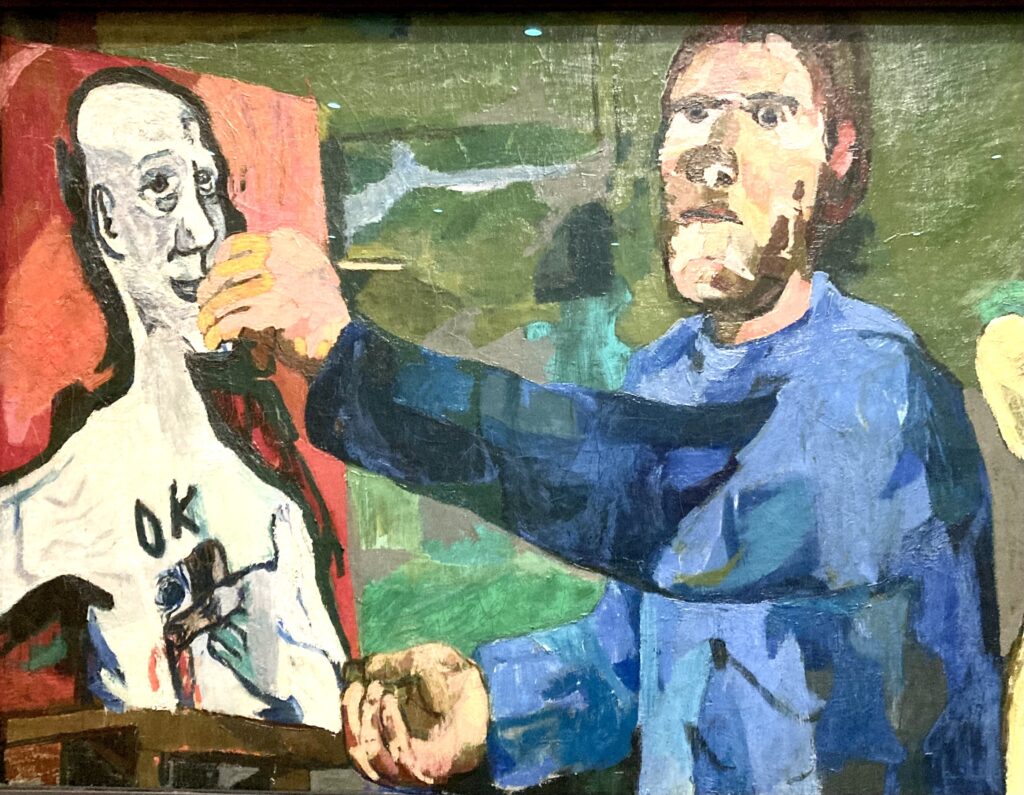
When I saw this self portrait, I felt guilty for not holding a brush and staring into a mirror myself. If a painter can produce a piece like this, become world famous and have it hang in one of the top galleries in the world, surely there is hope for us all?
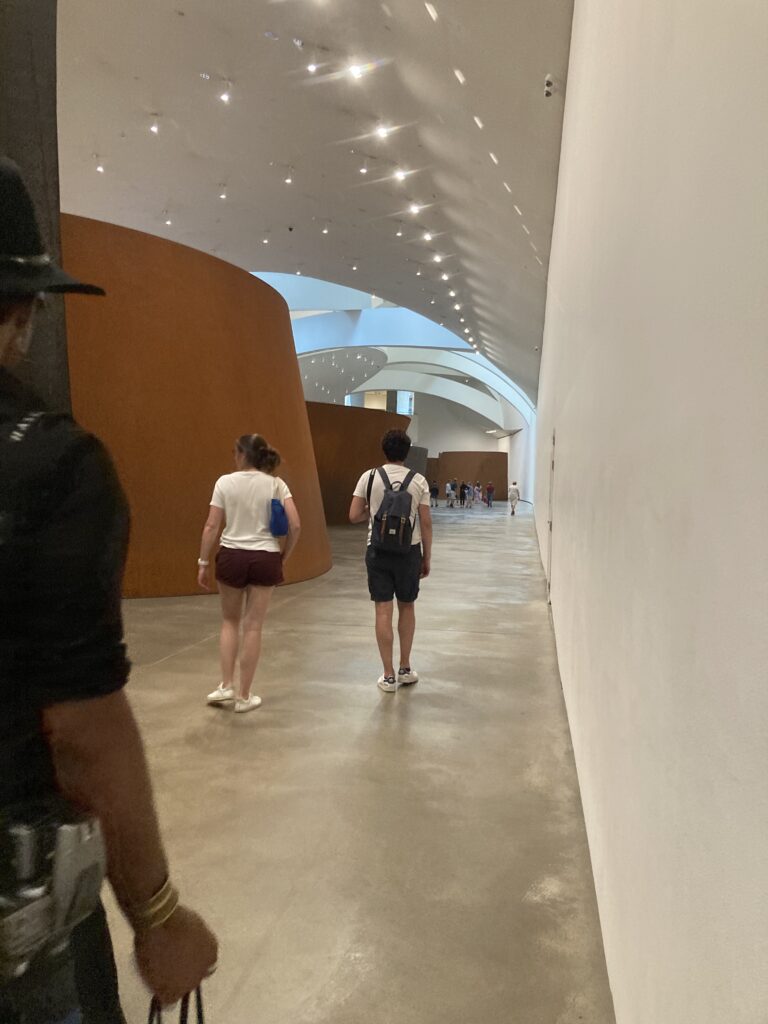


Richard Serra’s exhibit, “The Matter of Time” was as much of an active meditation as a passive spectator experience. An entire ground floor hall is given over to the massive weathered steel structures. Museum guests are invited to touch and walk around and through the pieces. Young people were not shy in taking advantage of these unusual art gallery freedoms. Running through the exhibits and calling out!
But even grown-ups were seen to smile, when you met them making their way through the wavy paths inside the structures which sometimes grew narrower, one ended in a private area in the centre of a spiral, each piece produced a different shaped space.

Initially, I fought with the feeling I was ‘wasting time’ as all the surfaces were blank rusty coloured walls, like an industrial building. I persevered, made up my mind to do one circuit and soon my sense of humour emerged… seeing it as a big joke… how could this be art? Soon I was investigating the inside… it was more about the spaces between the walls, the tunnels and corridors, and the way they expanded or contracted, leaning now outwards and then inwards, every plane rolling around. Perhaps it was also about enjoying other’s reactions. Some bemused like myself, and others irritated by the younger people running and calling, even complaining to the staff!
By the time I’d done one circuit, inside and out, I was really sad to be saying goodbye! I’ll never forget Richard Serra’s ‘Matter of Time’ installation.
There were many more exibits, and I think I photographed almost every one, but it’s all a matter of time.
Leave a Reply